Johnny and The Contacts
aka The Contacts
Auckland promoter and manager Benny Levin often said, “Pick up the Top Hat venue, with its band, Johnny and the Contacts, set them up anywhere in New Zealand, and you would have a success story.”
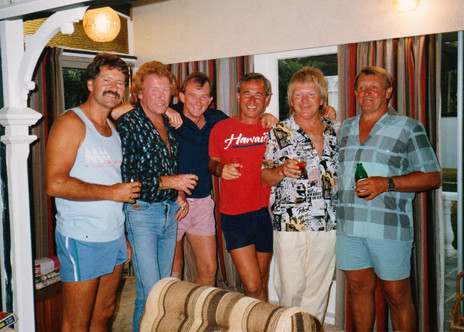
The Contacts – 20 years later reunion. Left to right: John Lindsay, John Walker, Garry Martin, Paul Gitmans, Johnny Dick and Noel Morley.
Photo credit:
John Lindsay collection
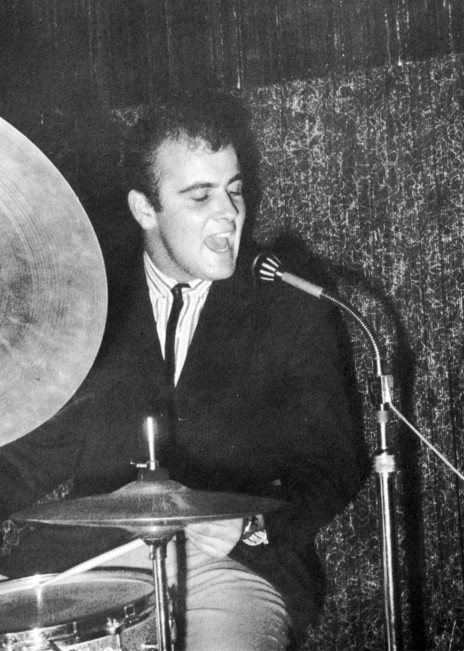
Craig Alexander on drums in Johnny and The Contacts.
Photo credit:
Craig Alexander collection
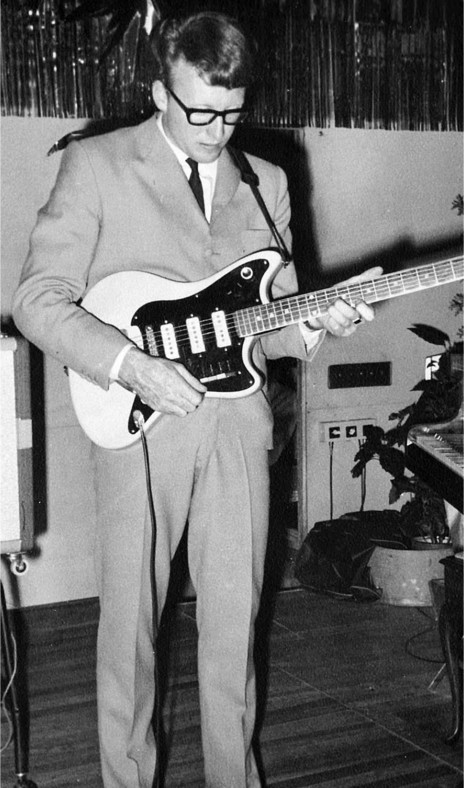
John "Mac" Walker, on guitar with Johnny and the Contacts, Top Hat, Napier, c 1964.
Photo credit:
Craig Alexander collection
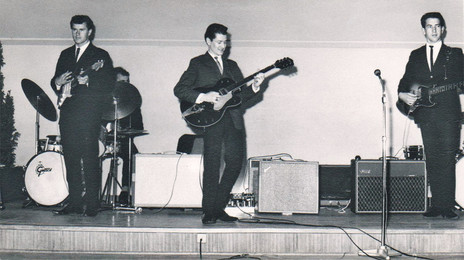
Johnny and The Contacts backing Peter Posa at the Top Hat, around 1964. His regular rhythm guitarist could not make the trip so none of his band came down. This Contacts trio of John Lindsay, Craig Alexander and Mike Angland did the job and so impressed Peter that he offered them the job of being one of his backing bands.
Photo credit:
John Lindsay collection
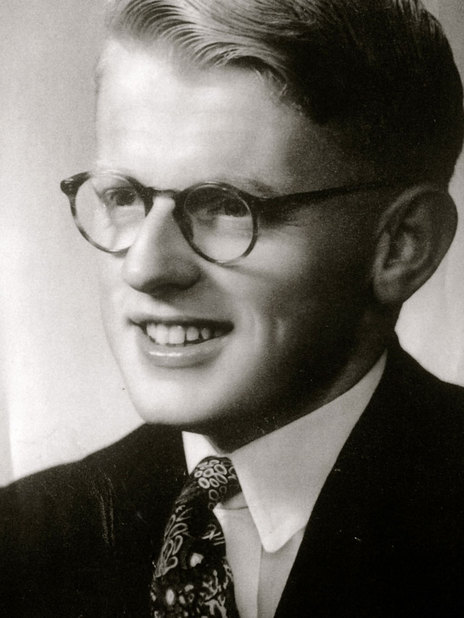
Bernie Meredith was 33 years old when he opened the Top Hat
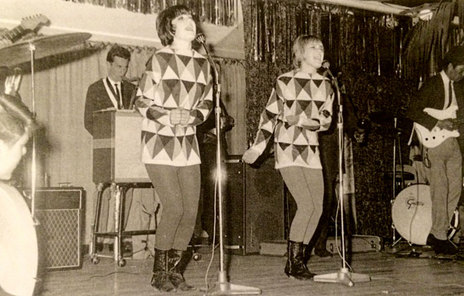
The Chicks at The Top Hat, backed by Johnny and the Contacts, 23 October, 1965
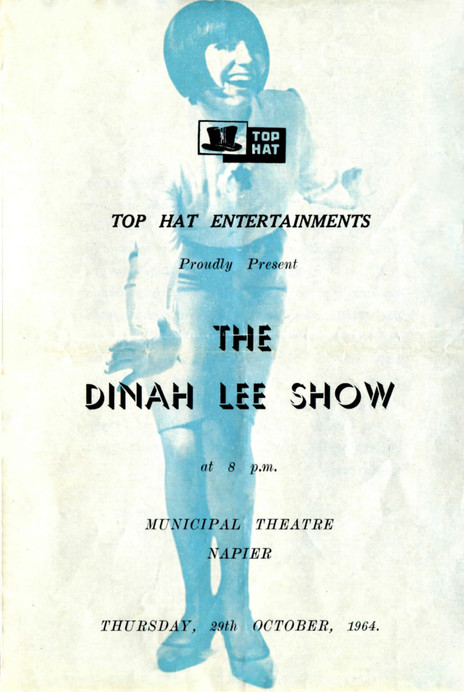
Johnny and The Contacts played two slots in the Dinah Lee Show show at Municipal Theatre, Napier, 29 October 1964. They opened both halves and accompanied all the solo artists including the headliner, Dinah Lee.
Photo credit:
Keith Richardson estate
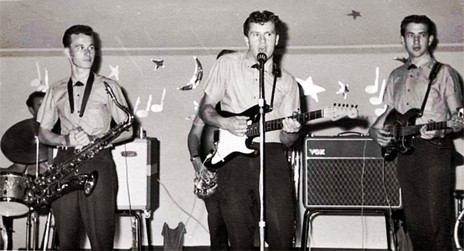
Johnny and The Contacts – John Lindsay (centre) taking the vocal on 'Roll Over Beethoven'. Others (left to right) Craig Alexander (drums, partly obscured), Paul Gitmans (saxophone), Mike Angland (bass). Note John’s 1963 Fender Stratocaster.
Photo credit:
Craig Alexander collection
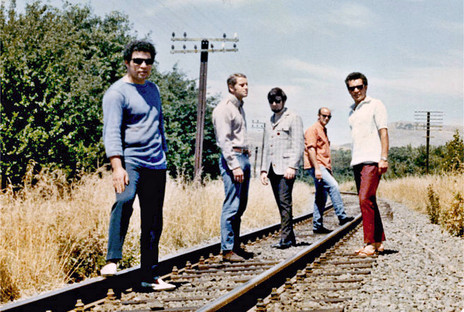
The Squires. Left to Right: Derek Parker, John Lindsay, Bob Smith, Craig Alexander, Ali Zurcher.
Photo credit:
Craig Alexander collection
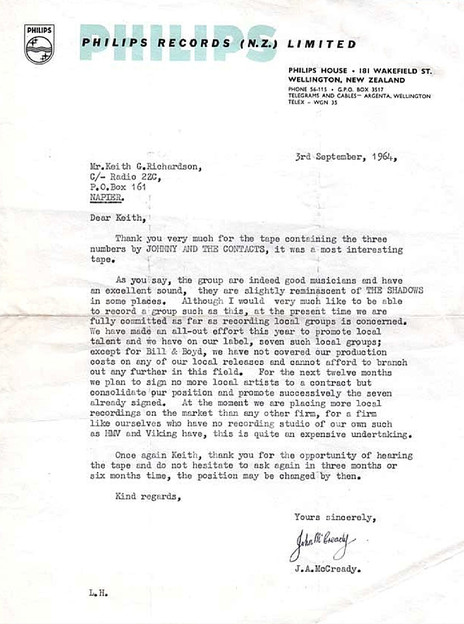
John McCready’s response to Keith Richardson who had sent him three tracks recorded by Johnny and The Contacts.
Photo credit:
Keith Richardson estate
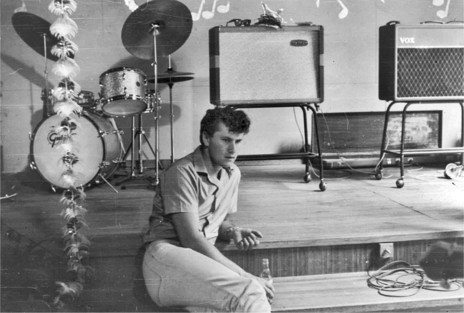
“This is a picture of my oldest mate John Lindsay, who was our rhythm guitarist in Johnny and The Contacts. I took the shot and I am sure he was a bit pissed off at the time. All bands have disagreements during practice sessions and the guy who was supposed to be running the group was very difficult to work with. John’s musical knowledge was a hell of a lot better than the band leader who just would not acknowledge the fact.” - Craig Alexander
Photo credit:
Craig Alexander collection
Listen to the Contacts, live at the Top Hat, Napier - 1967
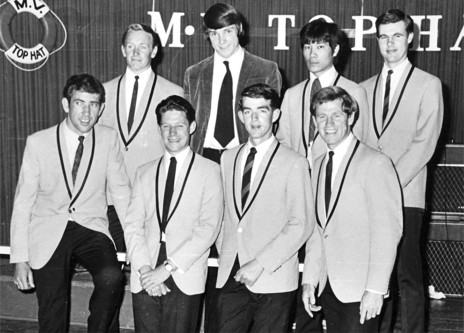
Matloes, formed in March 1968 from members of The Contacts and The Prima Brass. Back row: Noel Morley (saxophone), Grant Galgey (keyboards, vocals), Gordon Wong (guitar), John Barnes (trumpet). Front row: Mike Angland (bass, band leader), John Williams (trumpet), John Meehan (trombone), Gary Bothwell (drums).
Photo credit:
Publicity photo
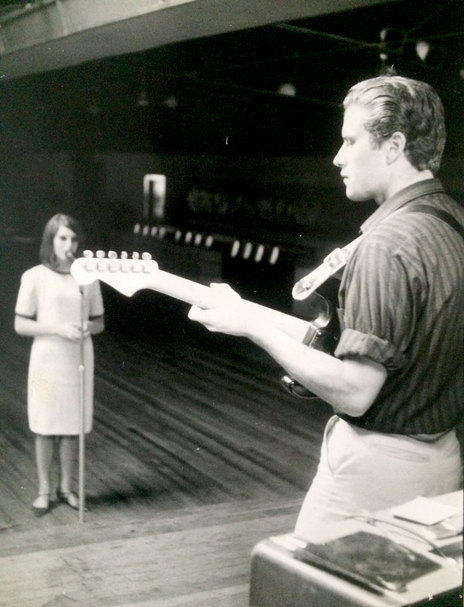
Allison Durbin at soundcheck in the Top Hat, John Lindsay on guitar.
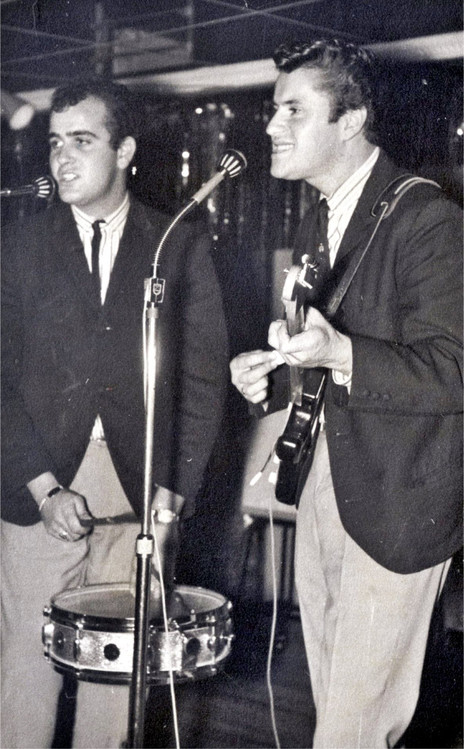
Johnny and The Contacts' Craig Alexander and John Lindsay in 1963. They were probably singing ‘Trains and Boats and Planes’.
Photo credit:
Craig Alexander collection
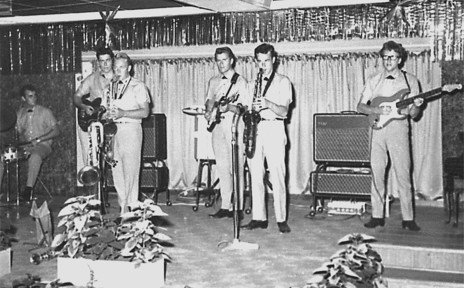
Johnny and The Contacts. Left to right: Craig Alexander, Max Hyde, Noel Morley, John Lindsay, Paul Gitmans, John Walker. This was the line-up that made the live broadcast from the Top Hat in 1964.
Photo credit:
John Lindsay collection
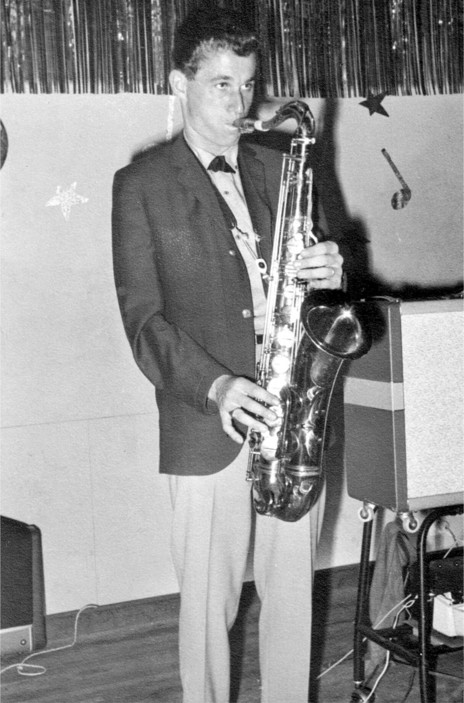
Paul Gitmans on tenor saxophone, Johnny and The Contacts.
Photo credit:
Craig Alexander collection
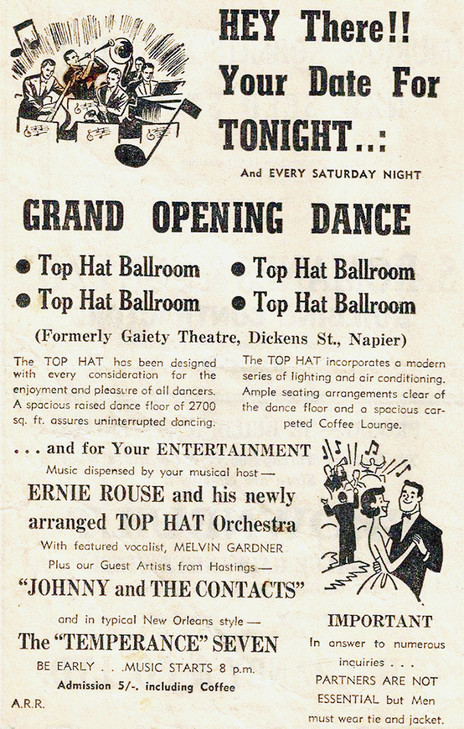
Advert for the Top Hat grand opening dance in October 1961. Although Johnny and The Contacts were formed to play at the Top Hat, they are described here as guest artists from Hastings. This was part of the marketing to spread the appeal of the new venue further afield than just Napier.
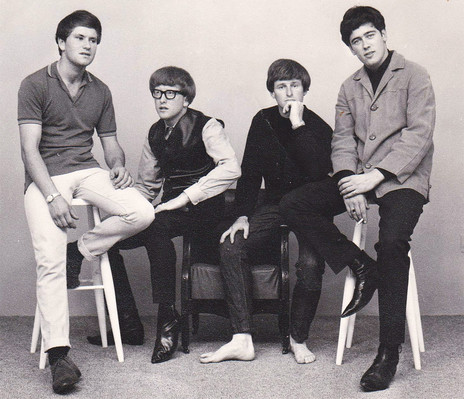
Publicity photo for the four members of Johnny and The Contacts who auditioned for a residency at The Top 20 in Auckland. John Lindsay, John (Mac) Walker, Gary Bothwell and Max Hyde. They were offered the job, but because all four did not want to leave Hawke’s Bay the band remained at the Top Hat.
Photo credit:
John Lindsay collection
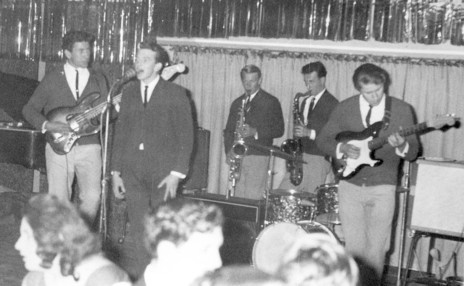
Johnny and The Contacts
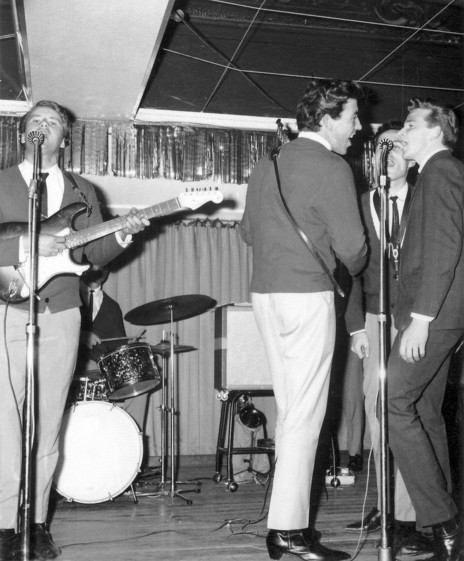
The Contacts in full vocal strength, 1966: John Lindsay, Mike Angland, Paul Gitmans (partly obscured), Garry Martin.
Photo credit:
MacConnells Photo Service
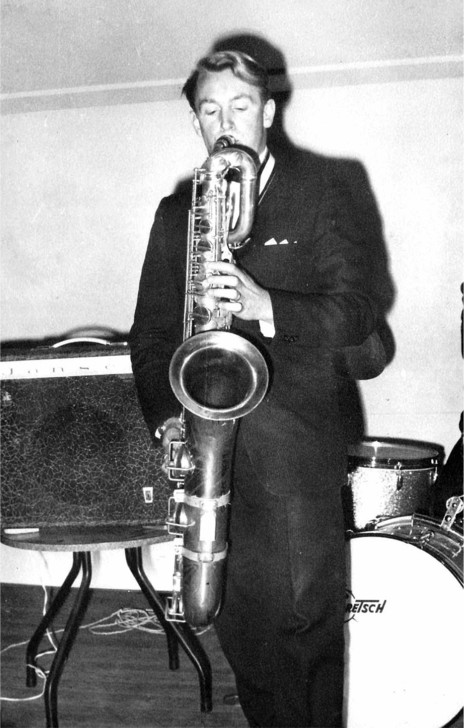
Johnny and The Contacts' Noel Morley on baritone saxophone. “Just about as big as Noel.” - John Lindsay.
Photo credit:
Craig Alexander collection
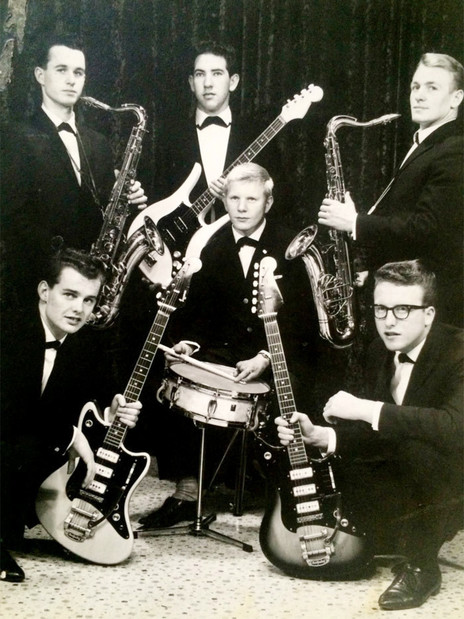
The original Johnny and The Contacts lineup: Top: Paul Gitmans, Mike Angland, Noel Morley. Middle: Johnny Dick. Front: Melvin Gardener, John “Mac” Walker.
Photo credit:
Publicity photo.
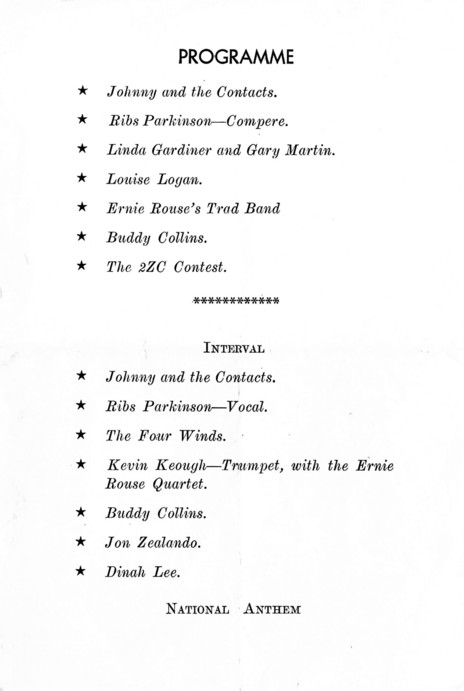
Full run down for the Dinah Lee Show at the Napier Municipal Theatre on Thursday, 29 October 1964. Dinah also headlined at the regular Top Hat dance on the Saturday night.
Photo credit:
Keith Richardson estate
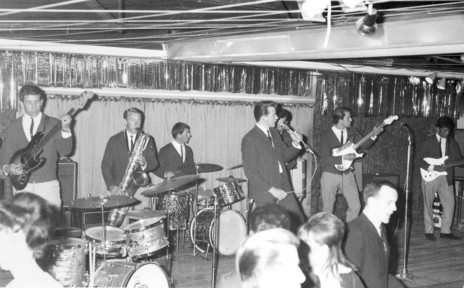
Johnny and the Contacts, 1966. From left: Mike Angland (bass), Noel Morley (sax), Gary Bothwell (drums), Garry Martin (vocals), Paul Gitmans (sax) obscured, John Lindsay (rhythm guitar), Kepa Toa (lead guitar). MacConnells Photo Service
Photo credit:
David Lindsay collection
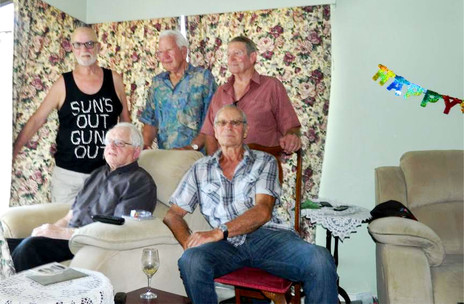
Bernie Meredith’s 90th birthday, January 24 2018. Bernie (seated left) with four members of The Contacts, who have kept in touch. L-R Craig Alexander (drums), Mike Angland (bass) Noel Morley (saxophone) and (front right) John Lindsay (vocals, guitar).
Photo credit:
Craig Alexander collection
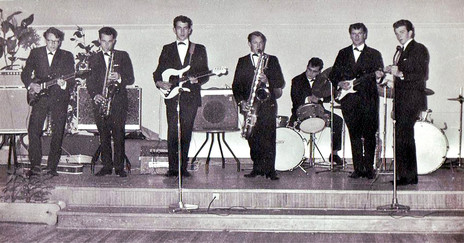
Johnny and The Contacts rock band 1963 at the Top Hat. Note the suits. “Very uncomfortable but club rules.”
Photo credit:
Craig Alexander collection
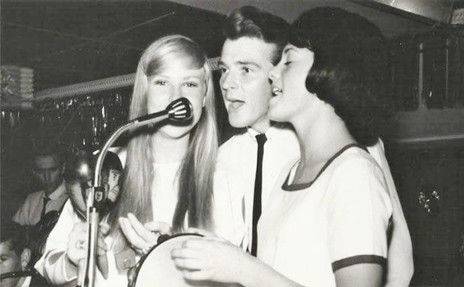
The Contacts lead vocalist Gary Martin, flanked by Sandy Edmonds (left) and Yolande Gibson at the New Year's Eve dance, the Top Hat, 1965.
Photo credit:
Daily Telegraph
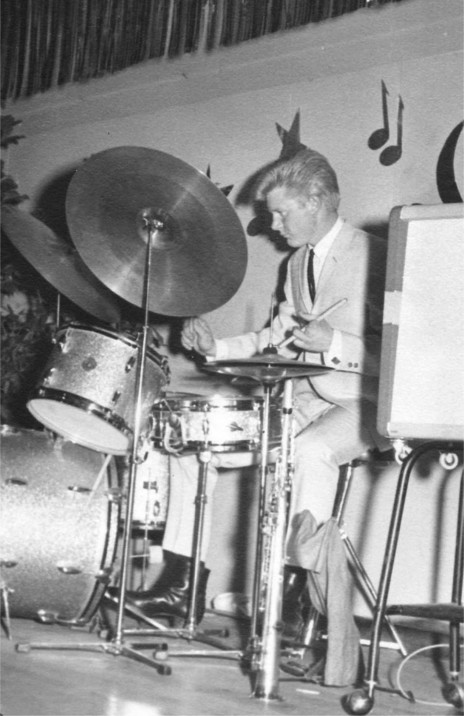
Johnny Dick playing Craig Alexander’s kit at the Top Hat. He was on leave from Australian band Billy Thorpe and the Aztecs. It is remembered that he was very loud. He died 21 January 2017.
Photo credit:
Craig Alexander collection
Treat Her Right - the Contacts, c.1965
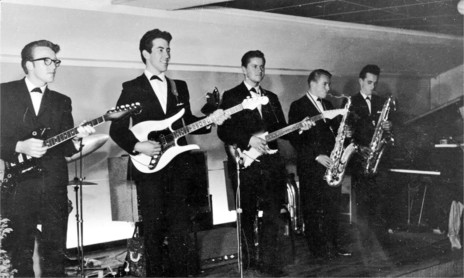
Johnny and The Contacts, 1963. Left to right: Johnny Walker, Mike Angland, John Lindsay, Noel Morley, Paul Gitmans. Not shown: Craig Alexander (hidden behind John Walker).
Photo credit:
Craig Alexander collection
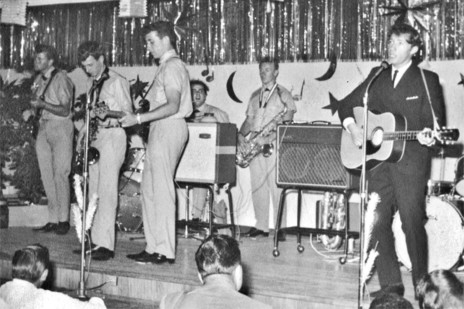
Johnny and The Contacts backing Des Gibson (right).
Photo credit:
Craig Alexander collection

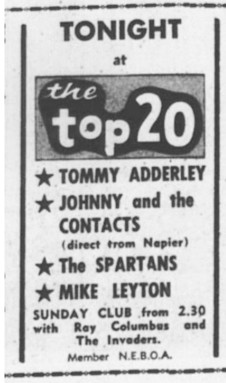
An advertisement for Johnny and the Contacts' gig at the Top 20 in Auckland, 7 March 1964. The visit also included an audition to replace Max Merritt and the Meteors, who were leaving for Australia. The Contacts were offered the job, but two of the group decided to stay in Hawke's Bay so they turned it down.
Members:
John "Mac" Walker - guitar
Melvin Gardener - guitar, vocals
Noel Morley - saxophone
Paul Gitmans - saxophone
Mike Angland - bass
Johnny Dick - drums
John Lindsay - guitar, vocals
Craig Alexander - drums
Gary Bothwell - drums
Garry Martin - vocals
Max Hyde - bass
Kepa Toa - guitar
Derek Fitzgerald - keyboards
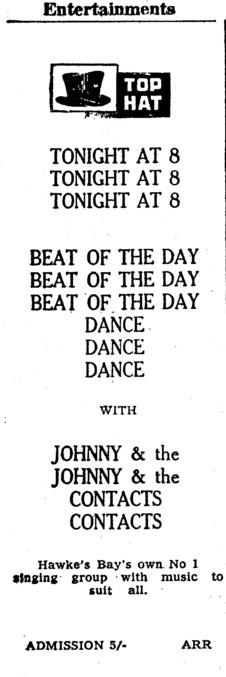
Advertisement for a Johnny & the Contacts dance at the Top Hat; Hawkes Bay Herald-Tribune, Thursday, 14 March 1963.

